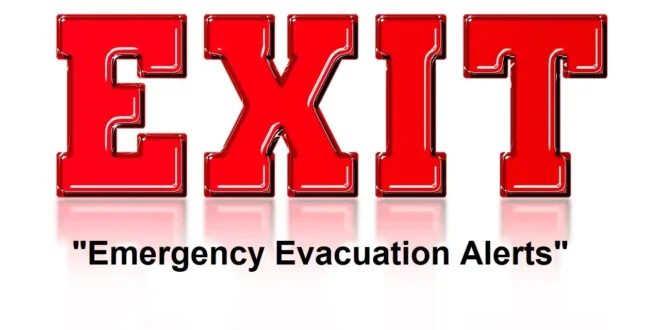In times of crisis, swift and decisive action can be a matter of life and death. Emergency evacuation alerts are vital tools that help ensure the safety of individuals during unforeseen events such as natural disasters, fires, or security threats. This blog post delves into the significance of emergency evacuation alerts and provides insights into strategies for implementing effective safety measures.
Understanding Emergency Evacuation Alerts
Emergency evacuation alerts are notifications issued to inform people about imminent dangers or threats that require immediate evacuation from a specific area. These alerts serve as a critical communication method to prompt individuals to evacuate quickly and seek shelter in a safer location. Whether delivered through sirens, text messages, social media, or public address systems, timely alerts can save lives by enabling prompt evacuation and minimizing risks.
Importance of Timely Notifications
The importance of timely and accurate emergency evacuation alerts cannot be overstated. In emergency situations, every second counts, and the effectiveness of evacuation efforts hinges on the speed and clarity of the alert system. Swift notifications enable individuals to react promptly, follow evacuation procedures, and navigate to designated safe zones, thus reducing the likelihood of injuries or casualties.
Strategies for Effective Emergency Evacuation
Implementing effective emergency evacuation strategies is essential for maximizing safety and minimizing chaos during crises. Here are key strategies to consider:
- Clear Communication Channels: Establish clear and reliable communication channels for disseminating evacuation alerts, including text messages, emails, sirens, and digital signage. Ensure that information is consistent across all platforms and easily accessible to all affected individuals.
- Designated Evacuation Routes: Define primary and alternative evacuation routes based on the nature of the threat and the layout of the environment. Mark evacuation routes with clear signage, lighting, and directional indicators to guide evacuees safely out of the danger zone.
- Training and Drills: Conduct regular evacuation drills and training sessions to familiarize individuals with evacuation procedures, assembly points, and safety protocols. Practice scenarios that simulate different emergency situations to enhance readiness and response capabilities.
- Integration of Technology: Leverage technology to enhance the effectiveness of emergency evacuation alerts. Implement automated alert systems, mobile applications, and digital platforms that can deliver real-time updates, evacuation instructions, and safety tips to a broad audience.
- Community Engagement and Education: Engage with the community to educate them on the significance of emergency evacuation alerts and procedures. Organize workshops, seminars, and educational programs that inform residents about how to prepare for emergencies, recognize alerts, and respond effectively. Empowering individuals with knowledge and skills is crucial for ensuring communal safety during crises.
Utilizing LED Light Bars for Enhanced Emergency Alerts on Vehicles
In the realm of emergency preparedness and evacuation alerts, the application of LED light bars on vehicles plays a pivotal role. Vehicles equipped with high-visibility LED light bars ensure that emergency communications and operations are conspicuously visible, even in poor weather conditions or during the night. Particularly for trucks and other emergency response vehicles, LED light bars serve as an immediate indicator of urgency, guiding individuals to safety and marking the presence of help in the vicinity.
These lighting solutions not only augment the effectiveness of evacuation efforts but also enhance the safety of both the responders and civilians during critical moments. By integrating LED light bars into the emergency alert system, communities can further improve their response strategies, ensuring a higher level of preparedness and a quicker, more organized evacuation process.
Collaborative Approach to Safety
Ensuring the success of emergency evacuation efforts requires a collaborative approach that involves coordination among various stakeholders, including emergency responders, facility managers, community leaders, and the general public. By working together and sharing responsibility for safety, communities can effectively respond to emergencies and protect lives.
Prioritizing safety through effective emergency evacuation alerts is a cornerstone of disaster preparedness and risk mitigation. By understanding the importance of timely notifications, implementing proactive evacuation strategies, and fostering a culture of preparedness, individuals and organizations can enhance their resilience in the face of emergencies. Remember, safety should always come first, and being informed and prepared can make all the difference in safeguarding lives and property.
We hope you found this article helpful. If you did, be sure to check out our blog for more great content like this.
 SlushWeb Live the Way You Love
SlushWeb Live the Way You Love



